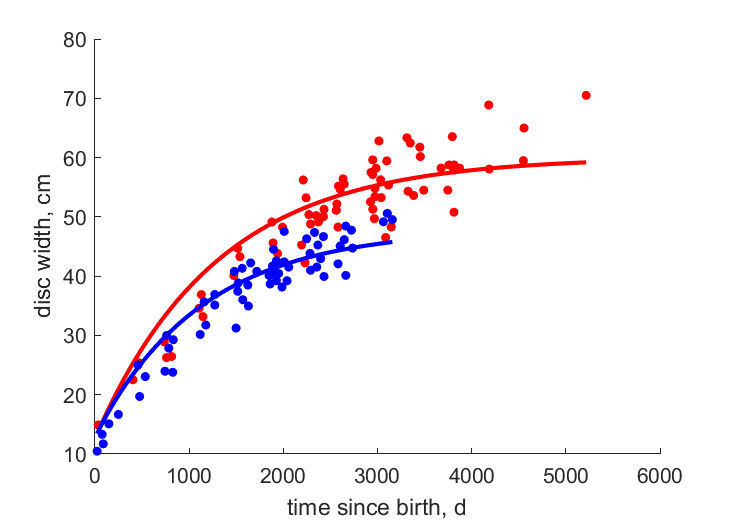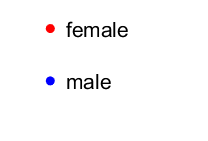Predictions & Data for this entry
| Model: std | climate: Am | migrate: | phylum: |
| COMPLETE = 2.5 | ecozone: TN | food: biCi | class: |
| MRE = 0.050 | habitat: 0iFr | gender: D | order: |
| SMSE = 0.005 | embryo: Mv | reprod: O | family: |
Zero-variate data
| Data | Observed | Predicted | (RE) | Unit | Description | Reference |
|---|---|---|---|---|---|---|
| ab | 167.8 | 183.2 | (0.09214) | d | age at birth | CharSant2018 |
| am | 5110 | 5080 | (0.005841) | d | life span | CharSant2018 |
| Lb | 14 | 12.94 | (0.07573) | cm | disc width at birth | CharSant2018 |
| Lp | 44.5 | 45.39 | (0.02007) | cm | disc width at puberty | CharSant2018 |
| Lpm | 35.5 | 36.01 | (0.01447) | cm | disc width at puberty for males | CharSant2018 |
| Li | 111 | 109.7 | (0.01143) | cm | ultimate disc width | fishbase |
| Wwi | 2e+04 | 2e+04 | (0.0001884) | g | wet weight at disc width 75 cm | Wiki |
| Ri | 0.01918 | 0.01934 | (0.008452) | #/d | maximum reprod rate | fishbase |
Uni- and bivariate data
| Data | Figure | Independent variable | Dependent variable | (RE) | Reference |
|---|---|---|---|---|---|
| tL_f |   | time since birth | disc width | (0.06772) | CharSant2018 |
| tL_m |   | time since birth | disc width | (0.05828) | CharSant2018 |
Pseudo-data at Tref = 20°C
| Data | Generalised animal | Potamotrygon leopoldi | Unit | Description |
|---|---|---|---|---|
| v | 0.02 | 0.03044 | cm/d | energy conductance |
| kap | 0.8 | 0.9741 | - | allocation fraction to soma |
| kap_R | 0.95 | 0.95 | - | reproduction efficiency |
| p_M | 18 | 13.59 | J/d.cm^3 | vol-spec som maint |
| k_J | 0.002 | 0.002 | 1/d | maturity maint rate coefficient |
| kap_G | 0.8 | 0.7984 | - | growth efficiency |
Discussion
- The cost for milk secretion is added to the investment from the reproduction buffer.
- Males are supposed to differ from females by {p_Am} and E_Hp only
Facts
- At first, they are enclosed in an egg case while the developing embryos feed on the yolk. After the egg hatches, the pup remains in the oviduct and receives nourishment from a milky secretion (Ref: fishbase)
Bibliography